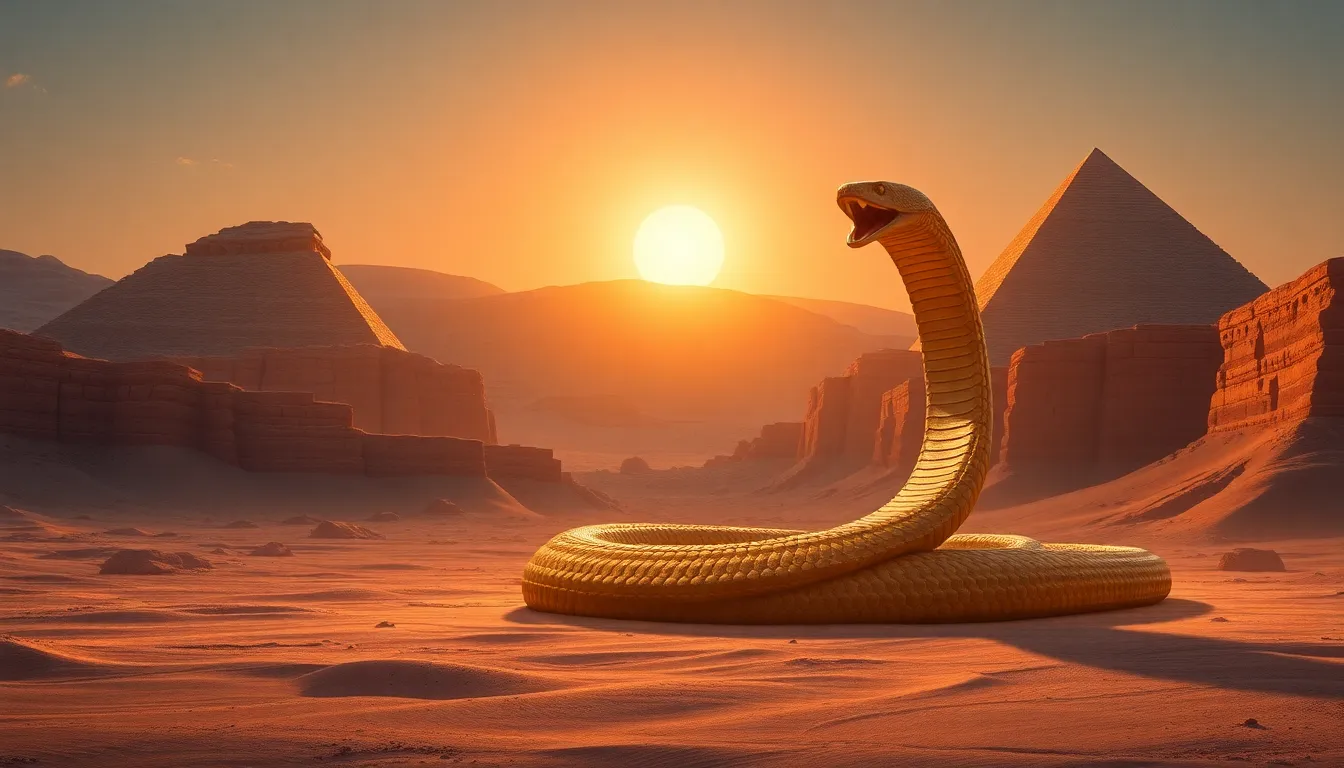The Geography of the Sacred Cobra: Myths of Wadjet
I. Introduction
Wadjet, one of the most significant deities in ancient Egyptian mythology, was revered as a protective goddess associated with the sacred cobra. Her importance extended beyond mere symbolism; she represented the very essence of the land and its people, particularly in Lower Egypt. The cobra, a powerful symbol in its own right, played a crucial role in both cultural and religious contexts, embodying protection, royalty, and divinity.
This article seeks to explore the geographical and mythological aspects of Wadjet, delving into her historical significance, the regions associated with her worship, and the legacy she left behind in both ancient and modern cultures.
II. Historical Context of Wadjet
The origins of Wadjet date back to the pre-dynastic period of ancient Egypt, where she was initially worshipped as a local deity of the Nile Delta. Over time, her imagery evolved, and she became associated with various symbols that underscored her protective nature. Wadjet was often depicted as a cobra, which was not only a significant animal in ancient Egyptian culture but also a representation of the goddess’s watchful eye over the land.
Wadjet’s association with Lower Egypt is paramount, as she was considered the patron goddess of this fertile region. The significance of her worship can be seen in the unification of Upper and Lower Egypt, where her protective powers were invoked to safeguard the pharaoh and the nation.
III. Geographic Regions Associated with Wadjet
The geography of ancient Egypt played a prominent role in shaping the myths surrounding Wadjet. The following areas were particularly significant in the worship of the sacred cobra:
- The Nile Delta: This region, rich in agriculture and biodiversity, was considered the heartland of Wadjet worship. Its lush landscape was symbolic of life and fertility, attributes associated with the goddess.
- Important Cities and Temples: Cities like Buto (Per-Wadjet) served as major centers of worship where temples dedicated to Wadjet flourished. These temples were often adorned with images of the sacred cobra, emphasizing her protective nature.
- Natural Features: The Nile River, with its life-giving waters, and the surrounding desert landscapes influenced the mythology of Wadjet, reinforcing her connection to the land and its sustenance.
IV. The Sacred Cobra: Symbolism and Significance
The sacred cobra (Uraeus) was a potent symbol in ancient Egyptian culture, embodying various meanings:
- Protection: The cobra was regarded as a fierce protector, capable of warding off evil and enemies. This protective aspect was integral to Wadjet’s identity.
- Guardian of the Pharaohs: Wadjet was often depicted as the guardian of the pharaohs, symbolizing their divine right to rule. The cobra was frequently seen on the crowns of pharaohs, indicating their protection by the goddess.
- Royal Iconography: The Uraeus became a staple in royal iconography, representing sovereignty and power. Pharaohs would invoke Wadjet’s strength and protection through this imagery.
V. Myths and Legends Surrounding Wadjet
Wadjet’s myths are rich and varied, reflecting her cosmic role and protective nature:
- Creation Myths: In some creation myths, Wadjet is associated with the primordial waters and is seen as a cosmic force that helped shape the world.
- Protection Over Pharaoh: Legends abound of Wadjet intervening in battles, safeguarding the pharaoh and ensuring the stability of the nation. Her presence was believed to bring victory and prosperity.
- Relationships with Other Deities: Wadjet was often linked with other prominent deities, such as Horus and Isis, forming a divine family that governed the balance of life and death, order and chaos.
VI. Rituals and Worship Practices
The worship of Wadjet involved various rituals and ceremonies that underscored her significance in ancient Egyptian culture:
- Ceremonies: Festivals honoring Wadjet were celebrated, particularly in the Nile Delta, where devotees would offer prayers and sacrifices to invoke her protection.
- Significance of the Sacred Cobra: The sacred cobra featured prominently in religious rituals, often used in amulets and talismans to protect the wearer from harm.
- Artifacts and Archaeological Findings: Numerous artifacts, including statues and inscriptions, have been discovered in temples dedicated to Wadjet, providing insight into the practices and beliefs surrounding her worship.
VII. Wadjet’s Legacy in Modern Culture
The influence of Wadjet extends beyond ancient times, permeating modern culture in various ways:
- Contemporary Interpretations: Modern interpretations of Egyptian mythology often highlight Wadjet’s role as a protector and symbol of feminine power.
- Sacred Cobra in Art and Literature: The image of the sacred cobra continues to inspire artists and writers, symbolizing wisdom, protection, and resurrection.
- Preservation of Myths: Modern spiritual practices sometimes incorporate Wadjet’s myths, reflecting a continued reverence for her protective powers and the lessons embedded in her stories.
VIII. Conclusion
The exploration of Wadjet reveals a rich tapestry of geographical and mythological dimensions that underline her importance in ancient Egyptian culture. The sacred cobra serves as a potent symbol of protection and divinity, embodying the enduring significance of Wadjet throughout history.
In conclusion, Wadjet’s legacy is a testament to the complexity of ancient belief systems. Studying her myths and the geographical context of her worship helps us understand the human need for protection, guidance, and the interplay between the sacred and the natural world.




